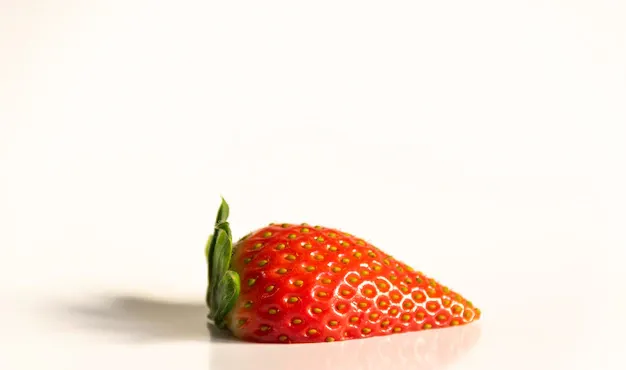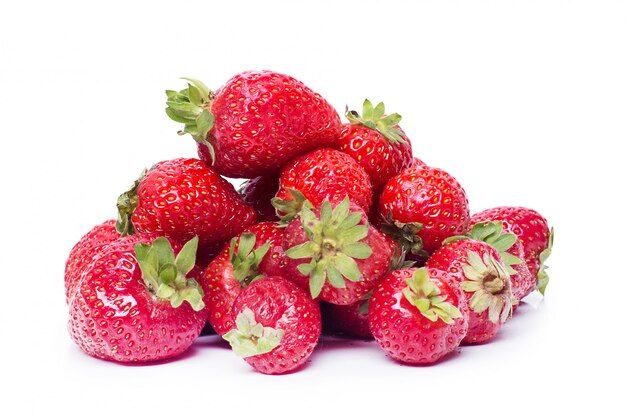Hello everyone how are you all hope on are you well today I am Banyan with my another blog.
Strawberries (Fragaria × ananassa) are one of the most popular fruits in the world, cherished for their sweet flavor, vibrant red color, and versatility. They are grown in various climates and can be cultivated using a range of methods, from traditional soil cultivation to more advanced hydroponic systems. In this article, we will explore the methods of strawberry cultivation and the numerous benefits and vitamins associated with eating strawberries.
Methods of Strawberry Cultivation
- Soil Preparation and Planting
The first step in cultivating strawberries is selecting a suitable location. Strawberries thrive in well-drained soil with a pH level between 5.5 and 6.5. To ensure the best growth, the soil should be rich in organic matter and nutrients. Farmers typically prepare the soil by tilling it, removing weeds, and amending it with compost or other organic matter.
There are two primary ways to plant strawberries: bare-root planting and potted planting. Bare-root planting involves planting dormant, bare strawberry plants directly into the soil, while potted plants are sold with a ready-to-plant root system. In both cases, it is important to plant strawberries at the correct depth, ensuring that the crown of the plant is just above the soil surface.
- Raised Beds and Row Covers
Many commercial strawberry growers use raised beds to improve drainage and prevent waterlogging. Raised beds allow for better air circulation, which helps prevent fungal diseases. Additionally, they provide an organized space for planting, making it easier to manage the crop.


Row covers are often used to protect strawberries from pests like aphids, slugs, and birds, as well as to extend the growing season. These covers create a microclimate that can shield plants from the elements, allowing strawberries to grow in cooler temperatures than they normally would. The row covers also help maintain consistent moisture levels, reducing the need for frequent irrigation.
- Hydroponic and Vertical Farming
Hydroponic farming involves growing strawberries in a nutrient-rich water solution, bypassing traditional soil. This method allows for precise control over nutrient levels, water usage, and growing conditions. Hydroponic systems can be particularly beneficial for strawberries grown in regions with poor soil quality or limited land.

Vertical farming, which involves stacking layers of plants in a controlled environment, is another modern method gaining popularity. Vertical farming is especially useful for growing strawberries in urban areas or places with limited land. By using this method, growers can maximize space and optimize environmental factors, such as light and humidity, to create ideal conditions for strawberry plants.
- Strawberry Varieties
Strawberry plants are typically classified into three categories based on their fruiting behavior: June-bearing, ever-bearing, and day-neutral.
June-bearing strawberries are the most common and produce a large harvest once a year, usually in late spring or early summer.
Ever-bearing strawberries produce fruit twice per year: once in early summer and again in fall.
Day-neutral strawberries are unique because they can bear fruit throughout the growing season, as long as environmental conditions remain favorable.


Each type has its own advantages, and growers select the variety that best suits their climate and market needs.
- Watering and Maintenance
Strawberries require consistent watering, especially during dry periods. Drip irrigation systems are often used for strawberry crops, as they provide water directly to the plant roots, minimizing water wastage and reducing the risk of fungal diseases. Overhead watering, on the other hand, can lead to water pooling around the leaves and fruit, encouraging disease.

Regular maintenance is also crucial for ensuring healthy strawberry plants. This includes removing dead or damaged leaves, controlling weeds, and applying organic mulches to retain moisture and suppress weed growth. Fertilization should be done regularly with balanced nutrients, particularly nitrogen, phosphorus, and potassium, which are essential for plant growth.
- Harvesting
Strawberries are typically harvested when the fruit has turned a deep red color, signaling that it has reached full ripeness. Overripe or underripe strawberries should be avoided, as they do not have the best flavor or texture. Harvesting is usually done by hand, and care must be taken to avoid damaging the fruit. After harvesting, strawberries are typically stored in cool conditions to preserve their freshness and flavor.
Benefits of Eating Strawberries
Strawberries are not only delicious, but they are also incredibly healthy. They are rich in a variety of vitamins, minerals, and antioxidants that contribute to overall well-being.
A. Rich in Vitamin C
One of the most notable nutrients in strawberries is vitamin C. A single serving (about eight medium-sized strawberries) provides more than 100% of the daily recommended intake of vitamin C. Vitamin C is a potent antioxidant that helps protect the body from harmful free radicals and supports the immune system. It also plays a vital role in collagen production, which is important for maintaining healthy skin, teeth, and joints.
B. High in Antioxidants
Strawberries contain a variety of antioxidants, including anthocyanins, ellagic acid, and quercetin, which help fight oxidative stress. Antioxidants neutralize free radicals that contribute to inflammation, aging, and various chronic diseases. Regular consumption of strawberries may help reduce the risk of conditions like heart disease and cancer by protecting cells from damage.
C. Supports Heart Health
Strawberries have been shown to improve cardiovascular health by reducing inflammation and oxidative stress. The anthocyanins in strawberries are particularly beneficial, as they have been linked to improved blood vessel function, reduced blood pressure, and lower cholesterol levels. Studies suggest that regular strawberry consumption may help reduce the risk of heart disease and stroke.
D. Rich in Fiber
Strawberries are a good source of dietary fiber, particularly soluble fiber. Fiber is essential for digestive health as it helps regulate bowel movements and supports the growth of healthy gut bacteria. It also helps control blood sugar levels, reduces bad cholesterol (LDL), and may promote weight management by keeping you feeling full for longer periods.
E. Low in Calories
Strawberries are naturally low in calories, making them an excellent choice for people looking to maintain a healthy weight. A cup of sliced strawberries contains only about 50 calories, making it a guilt-free snack. Additionally, the high water content in strawberries (about 91%) makes them hydrating and refreshing.
F. Rich in Folate
Folate, or vitamin B9, is another important nutrient found in strawberries. Folate is essential for cell division and growth, making it especially important for pregnant women to support fetal development. It also plays a role in reducing the risk of birth defects, as well as supporting brain function and mood regulation.
G. Anti-Inflammatory Properties
Chronic inflammation is associated with a number of health issues, including arthritis, diabetes, and heart disease. The antioxidants and phytonutrients in strawberries, particularly quercetin and anthocyanins, have been shown to have anti-inflammatory effects. Regularly eating strawberries can help reduce inflammation and improve overall health.
Strawberry cultivation involves a range of methods, from traditional soil planting to advanced hydroponic and vertical farming systems. Whether grown in the ground or in controlled environments, strawberries require specific conditions to thrive. The benefits of consuming strawberries are numerous, with their high vitamin C content, antioxidants, fiber, and heart-healthy properties making them a powerful addition to a healthy diet. By incorporating strawberries into your meals, you can enjoy not only their sweet taste but also a wide array of health benefits that contribute to overall well-being.
video credit free Technology channel
So far Today...
Stay Home
Thanks for Your Time Friend.
♥♥♥♥♥♥
Ok
See you Again in a New blog.
Thanks for being with me.
Plese Follow Me......
@mspbro
★★To contact me★★
Subscribe My 3speak 3speak Channel
Follow me Twitter
Add me Facebook



